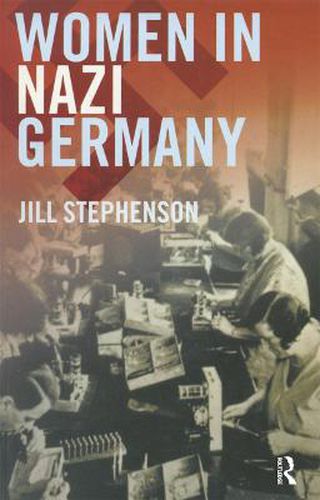Readings Newsletter
Become a Readings Member to make your shopping experience even easier.
Sign in or sign up for free!
You’re not far away from qualifying for FREE standard shipping within Australia
You’ve qualified for FREE standard shipping within Australia
The cart is loading…






This is a history of the experiences of diverse women in Nazi Germany in peacetime and during the Second World War, within the context of twentieth century European history. Through a consideration of race, reproduction and sexuality, employment patterns and opportunities, education and socialization, and the wartime fate of both favoured ‘Aryan’ women and the Nazi regime’s designated ‘racial enemies’ and its opponents, it challenges both myths which have persisted and theories which have recently dominated debate about this subject.It argues that the Nazi regime’s aim was to purge and then control the majority of ‘Aryan’ women, invading their privacy as well as both mobilizing them for the regime’s projects and indoctrinating their children to a sense of service. ‘Aryan’ women’s reward was to be enhanced national self-respect but individual self-denial, as material benefits were discouraged in the pursuit of economic self-sufficiency and a war economy. At the same time, Jews, Roma and Sinti ‘Gypsies’ and Slavs from eastern Europe - forced labourers in wartime - were marginalized, dispossessed and abused. Many of them were forcibly sterilized, and many were ultimately incarcerated and murdered. In wartime, as Nazi policies of persecution reached their terrible conclusion, some ‘Aryan’ women colluded in atrocities while others were casualties of Hitler’s fight to the finish. The book concludes with a discussion of the ‘perpetrators and victims’ debate, the salience of ‘class’ in Nazi Germany and the extent to which Nazism provided new opportunities for women. The Documents Section presents many sources previously unpublished in English.Jill Stephenson is Reader in History at the University of Edinburgh. Her many publications include “Women in Nazi Society’ (1975) and "The Nazi Organization of Women’ (1981).
$9.00 standard shipping within Australia
FREE standard shipping within Australia for orders over $100.00
Express & International shipping calculated at checkout
This is a history of the experiences of diverse women in Nazi Germany in peacetime and during the Second World War, within the context of twentieth century European history. Through a consideration of race, reproduction and sexuality, employment patterns and opportunities, education and socialization, and the wartime fate of both favoured ‘Aryan’ women and the Nazi regime’s designated ‘racial enemies’ and its opponents, it challenges both myths which have persisted and theories which have recently dominated debate about this subject.It argues that the Nazi regime’s aim was to purge and then control the majority of ‘Aryan’ women, invading their privacy as well as both mobilizing them for the regime’s projects and indoctrinating their children to a sense of service. ‘Aryan’ women’s reward was to be enhanced national self-respect but individual self-denial, as material benefits were discouraged in the pursuit of economic self-sufficiency and a war economy. At the same time, Jews, Roma and Sinti ‘Gypsies’ and Slavs from eastern Europe - forced labourers in wartime - were marginalized, dispossessed and abused. Many of them were forcibly sterilized, and many were ultimately incarcerated and murdered. In wartime, as Nazi policies of persecution reached their terrible conclusion, some ‘Aryan’ women colluded in atrocities while others were casualties of Hitler’s fight to the finish. The book concludes with a discussion of the ‘perpetrators and victims’ debate, the salience of ‘class’ in Nazi Germany and the extent to which Nazism provided new opportunities for women. The Documents Section presents many sources previously unpublished in English.Jill Stephenson is Reader in History at the University of Edinburgh. Her many publications include “Women in Nazi Society’ (1975) and "The Nazi Organization of Women’ (1981).